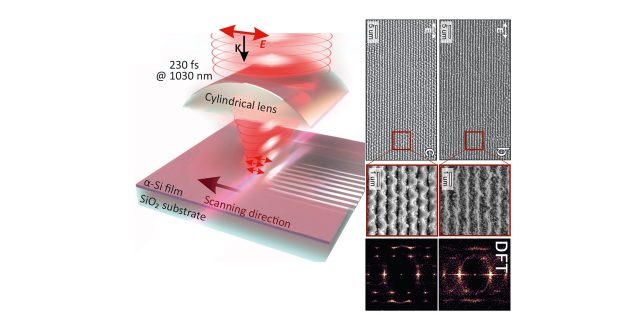Here, we applied direct laser-induced periodic surface structuring to drive phase transition of amorphous silicon (a-Si) into nanocrystalline (nc) Si imprinted as regular arrangement of Si nanopillars passivated with SiO2 layer. By varying the laser beam scanning speed at a fixed pulse energy, we successfully tailored the resulting unique surface morphology of the formed LIPSSs that changes from ordered arrangement of conical protrusions to highly uniform surface gratings where sub-wavelength scale ripples decorate the valleys between near-wavelength scale ridges. Along with surface morphology, nc-Si/SiO2 volume ratio can be also controlled via laser processing parameters allowing to tailor optical properties of the produced textured surfaces to achieve anti-reflection performance or partial transmission in the visible spectral range. Diverse hierarchical LIPSSs can be fabricated and replicated over large-scale areas opening pathway for various applications including optical sensors, nanoscale temperature management, and solar light harvesting. By taking advantage of good wettability, enlarged surface area and remarkable light-trapping characteristics of the produced hierarchical morphologies, we demonstrated first LIPSS-based surface enhanced fluorescent sensor that allowed to identify metal cations providing sub-nM detection limit unachievable by conventional fluorescent measurements in solutions.

An amorphous to nano-crystalline Si phase transition and nano-texturing
WRHI Newsおすすめ
Published
(School of Materials and Chemical Technology / Dr. Saulius Juodkazis)
“Hierarchical anti-reflective laser-induced periodic surface structures (LIPSS) on amorphous Si films for sensing applications.”
Nanoscale (DOI: https://doi.org/10.1039/D0NR02182B)
For details, click here
<Abstract>
